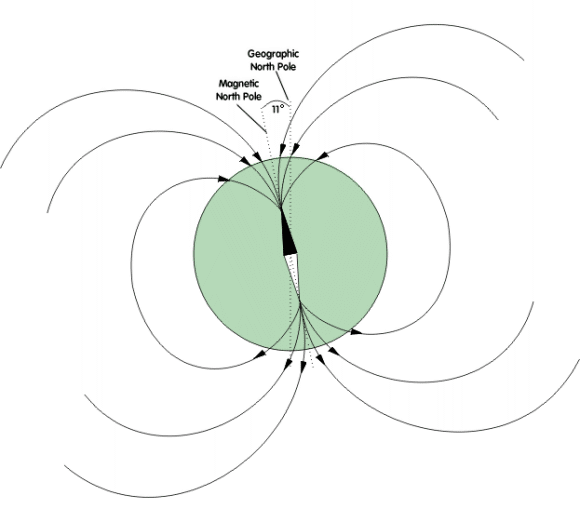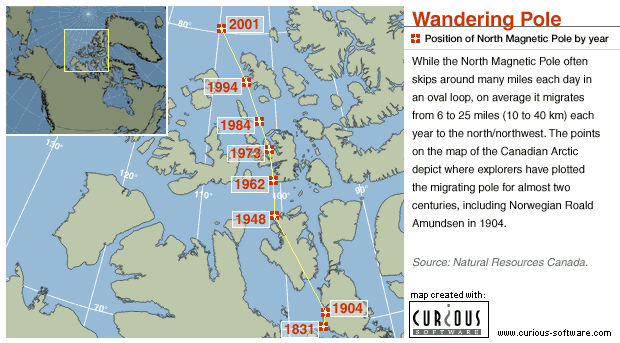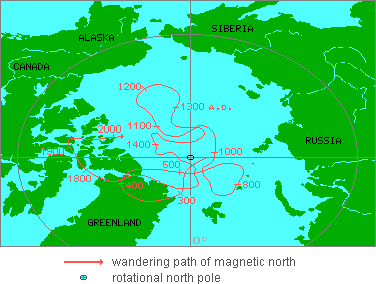Earth's Magnetic Field
to do as you read
Compasses align themselves with the Earth's magnetic field, and because the magnetic poles are close to the geographic poles, compasses point in the north-south direction. The "north" end of the compass needle points north; that's why we call it that. Because opposite magnetic poles attract each other, that means that our giant imaginary bar magnet, inside the Earth, has its "south" pole near the north geographic pole. However, it would be confusing to call the northern-hemisphere pole the "south magnetic pole". Instead, we call it the "north magnetic pole".
Compasses point towards magnetic north, not true (geographic) north, and that can be a problem if you are using a compass for navigation. You have to take into account the difference between the two "norths", called magnetic declination. Maps used by hikers, sailors, pilots, soldiers, and field scientists all will have a legend somewhere that states what the magnetic declination is. For Greensboro, the declination is currently 8°W (compasses point 8° to the west of true north.)
The magnetic poles are not fixed; over time they drift considerable distances. At this time the north magnetic pole is located in extreme northern Canada, at a latitude of about 83°.
In addition to this wandering, every once in a while the entire magnetic field reverses polarity. That is, the north and south magnetic poles trade places. By "every once in a while", I mean every 700,000 years, on average. How do we know this? When igneous rocks form (from the cooling of lava erupted from volcanoes or rifts) the new rocks retain the magnetic field of the surroundings at the time they solidified. Geologists sample rocks from different periods of time and can reconstruct a history of the Earth's magnetic field. As of now, that record goes back 330 million years. The magnetic reversals don't happen on a regular schedule: the time between reversals can vary from under 100,000 years to many millions of years. The last reversal happened 780,000 years ago. The reversal process itself takes about 5,000 years, give or take a few thousand. [Source: Geological Survey of Canada.]



